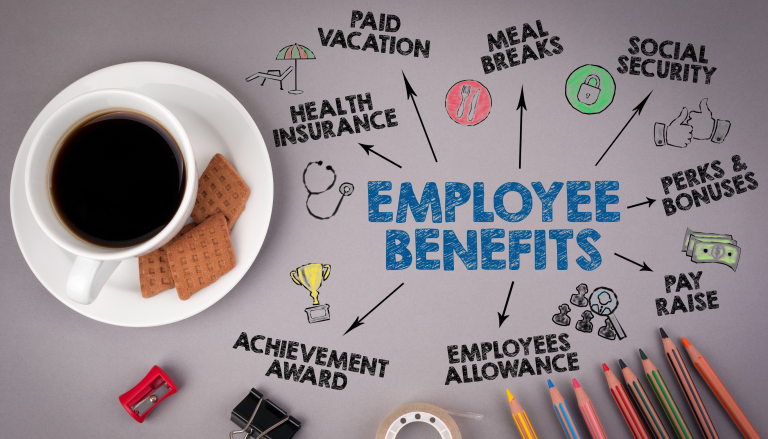According to the International Labor Organization, there are about 340 million occupational accidents that take place around the world. People who work under certain conditions are more prone to accidents at the workplace, such as working on heights, in confined spaces, with electrical equipment, with heavy machinery, and more.
There are laws in place to protect workers and look after their safety in the workplace. If the companies don’t comply with them and their employees work in hazardous conditions, it can lead to lawsuits, loss of workers, and a tarnished reputation. As such the latest technologies can aid companies in ensuring workplace safety. Incorporating technology into workplace safety is not a choice anymore if you want to function ethically and efficiently.
Let’s find out what technologies of the 21st century are currently taking over the corporate world that you can use in your business to improve workplace safety for workers.
Technologies That Can Improve Workplace Safety
EHS professionals are encouraging the use of technologies for maintaining a safe workplace. Such technologies can range from management software and apps to wearables like tech-controlled helmets and modern PPE.
While there is a range of workplace safety technologies available, not every tech equipment is suitable for every kind of business. For a business that needs working in the mines, the protective gear will be different than for companies handling chemicals. But there are a few most popular ones growing at a rapid pace.
Keep reading to know about some of the top technological solutions that can improve workplace safety.
EHS Management Software
EHS refers to the Environment, Health, and Safety, which is a set of ways through which businesses can work while keeping the environment safe and looking after the safety of their workers. It can be difficult to keep up with all the industry regulations and policies for keeping the environment safe and not stepping out of the line. You need to constantly be in touch with data to analyze trends, assess the risks of tasks, and be in compliance with regulations.
Having one application to manage EHS in a business would be helpful in keeping all information in one place. There are multiple options for EHS management software. Each focuses on a different set of tasks, but you can generally expect functionalities like managing employee training, assessing risks in a certain task, analyzing trends based on data, optimizing workflow, complying with health and safety protocols, injury reporting, managing inspection, and more.
Your business can budget, make a plan, and look for suitable software that meets your company’s needs.
Wearables and IoT
Wearable technology can take various forms. It could be as simple as a smartwatch that tracks the body temperature and heart rate and warns the worker as soon as anything is out of line. Wearables could also take the form of exoskeletons which could be worn while working with heavy machinery, having to stand for long periods, or protecting your physical posture.
IoT or the Internet of things includes physical objects connected to the internet or software that allows the data to be transferred back and forth so you can monitor the equipment and control processes. This prepares you for potential accidents.
Adjustable Workstations
Not only in the outdoor workstations that workers are threatened. Many studies have shown that continuous sitting in offices and spaces where employees work for long stretches of hours can create a weak body leading to injuries related to weak bones, improper posture, and more.
An adjustable workstation combines technology and ergonomics – the study of the productivity of people in their work environments. There are tools available in the market based on these concepts, such as ergonomic keyboards and mice, ergonomic chairs, sitting desks that can be converted into standing desks, etc.
Interactive Tools for Training
Proper training is crucial in avoiding any unpleasant circumstances, especially in industries that require working under threatening conditions, such as mining. Interactive training tools such as virtual reality and augmented reality can help provide real-time training to employees so they can be better prepared for the real work environment and avoid danger.
Robotics
Robots are becoming more commonplace in the world. Combine robotics with AI, and you have yourself a task force that can help human workers or replace them entirely in doing work that is hazardous or can cause injuries such as lifting heavy objects, going to hard-to-reach locations, doing repetitive tasks, conducting inspections, and much more. AI is making robots more intelligent in doing complicated tasks as well.
Drones
Drones or unmanned aircraft systems (UAS), as they are technically called, can be used in companies for workers’ safety, as well.
You can use drones to inspect sites and locations, especially in industries like construction and mining. The drones can be set up with laser scanners, sensors, and cameras to make sure the site for work is safe for humans and there is no potential danger. This can significantly lower the risk of workers coming in contact with hazardous situations.
Building Information Modeling
Building Information Modeling is a type of technology that helps in creating a physical and functional draft of a building or an infrastructure site using digital representation. The BIM technology is especially useful in the construction industry to locate any potential hazards on the construction site beforehand. This can save workers from several injuries.
Conclusion
These are just a few of the types of technologies being used to improve workplace safety. Under each, you will find various types of services, and there are multiple EHS management software with unique functionalities.
Your specific business needs and the work you do will determine the protective technologies you can get the most benefit out of. If you don’t have workplace safety on your priority list, work fast and introduce new technological solutions to ensure workplace safety right now.
HR Future Staff Writer.


























